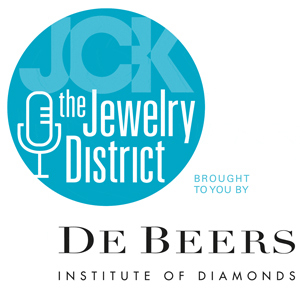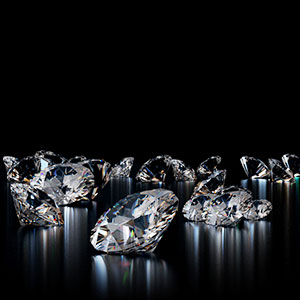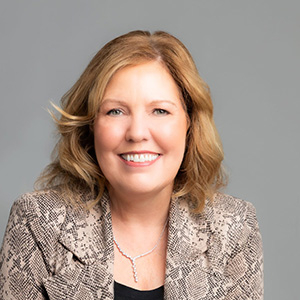
JCK editor-in-chief Victoria Gomelsky and news director Rob Bates discuss highlights from an event-packed NYC Jewelry Week. These include a jewelry collective working with artisanal gold miners in Peru, a panel of Indigenous designers who channel cultural traditions into their work, and a Stephanie Gottlieb partnership with De Beers emphasizing diamond provenance. Rob weighs in on whether the Black Friday boom will prove a bellwether for holiday sales, then turns the conversation to WWF Switzerland’s annual report on sustainability in the watch and jewelry industry.
Sponsored by De Beers: institute.debeers.com
Show Notes
01:10 Cartier to present watch exhibit at Art Basel Miami Beach
03:09 Reciprocity showcases mine-to-market transparency
07:49 Stephanie Gottlieb partners with De Beers
12:53 NYC Jewelry Week spotlights Indigenous and Black jewelers
15:40 Holiday sales predictions
19:06 WWF Switzerland gauges industry’s sustainability efforts
Episode Credits
Hosts: Rob Bates and Victoria Gomelsky
Producer and engineer: Natalie Chomet
Editor: Riley McCaskill
Plugs: @jckmagazine; institute.debeers.com
Show Recap
Cartier to present watch exhibit at Art Basel Miami Beach
Victoria will attend Art Basel Miami Beach in early December as a guest of Cartier for the debut of “Time Unlimited,” an immersive exhibition exploring the history of the jeweler’s timepieces. Victoria finds it surprising to realize that people outside the industry don’t necessarily associate the iconic French company with watches. “Cartier is one of a handful of billion-dollar brands in the watch world,” she says. “Since the pandemic, they’ve been on a tear, with a lot of interest at auction and rising prices in the pre-owned space.”
Reciprocity showcases mine-to-market transparency
Victoria and Rob recap key events from November’s busy NYC Jewelry Week. Among them was an exhibit at the Peruvian Consulate General by Reciprocity, a collective of jewelry designers working directly with artisanal miners from Peru. In addition to a panel on responsible sourcing and traceable gold mined without mercury, the group unveiled a new collection of gold jewelry by American, European, and Peruvian designers. Each piece bears the name of the individual in Peru who mined the gold, along with photos, Victoria says. “This was as hyper-traceable as I can imagine.”
Rob likes the concept. “People have the idea that everything mined is terrible,” he says, “but mining supports a lot of people.” Reciprocity’s approach underscores this point and offers a way to distinguish the jewelry, in his opinion.
Victoria believes such in-depth transparency will strike a chord with the growing community of buyers who care deeply about where their goods originate, particularly millennials, Gen Zers, and perhaps Gen Alpha when they’re old enough to buy jewelry.
Stephanie Gottlieb partners with De Beers
Victoria also paid a visit to Stephanie Gottlieb’s showroom in the Diamond District during NYC Jewelry Week, where the retailer/influencer was celebrating a new partnership with De Beers that focuses on provenance. Per the collaboration, every hero diamond in pieces from Stephanie’s And a Half collection is inscribed with a code of origin. (The collection grew out of a bestselling item with a central hero diamond, Victoria notes.) You can also click on the QR code that comes with the diamond for multimedia content regarding the stone’s origin as well as De Beers Institute of Diamonds’ suite of services.
Victoria points out that while De Beers has been hard at work for the past five years building its Tracr blockchain platform, interest in diamond origin has exploded recently. There’s a sense of urgency about it because the G7 is expected next year to close loopholes allowing importation of Russian diamonds cut and polished in other countries, she explains. Sellers will need to prove that their diamonds didn’t originate in Russia.
“It’s fascinating to see how the idea of traceability and provenance has blossomed into a cornucopia of options, whether it’s miners involved with Reciprocity or Stephanie Gottlieb selling diamonds that come with an origin service,” says Victoria.
“This is definitely the wave of the future,” according to Rob. “It’s good to be more open and up front about where diamonds come from.” However, as demand increases for services like Tracr, the question on everyone’s mind is: How well will traceability platforms be able to keep up with the growing demand? “There are going to be a lot of diamonds on these platforms,” Rob predicts.
NYC Jewelry Week spotlights Indigenous and Black jewelers
Other standout NYC Jewelry Week events for Victoria were a panel discussion with Indigenous jewelers honoring their heritage in their work and what she calls “the hottest party in town”—the Black in Jewelry Coalition’s awards ceremony. “They’re a new organization, but they’ve gathered so much momentum,” Victoria says. She thinks it’s wonderful that once-marginalized communities and voices are coming to the fore. “It enriches the whole industry,” Victoria says, “and I think we’ll see more of it.”
Holiday jewelry sales predictions
Victoria cites Rob’s recent JCK article identifying jewelry as a hot seller during a record-setting Black Friday weekend and asks him what this might herald for December sales. Rob anticipates a drop from 2022 numbers, which were buoyed by the tail end of the COVID-fueled sales boom. “It’s been a mixed year,” he says of 2023, with the high and low ends of the market splitting and most gains in the high end. Victoria wonders whether the trend will continue or wealthy buyers will start to feel the pinch too. Victoria and Rob promise to revisit the question in January when they have more holiday sales data and insights from retailers.
WWF Switzerland gauges industry’s sustainability efforts
Finally, Victoria and Rob discuss the recent report from the Swiss branch of the World Wildlife Fund (WWF) on sustainability in the watch and jewelry industry. Victoria recalls that the first of these reports came out in 2018 and concluded that there was much work to be done on transparency. This year, the WWF reached the same conclusion.
Victoria was surprised to see Breitling receive a low sustainability rating. “To observers of the industry, they’re one of the brands leading the charge,” she says. Rob notes that companies owned by conglomerates, such as LVMH, Kering, and Richemont, tended to get better ratings than smaller stand-alone brands, perhaps because the former have more resources. “In the end, it’s just one organization’s opinion,” he states.
Victoria sees companies becoming more thoughtful about how they position themselves on sustainability as consumers get adept at recognizing false claims, though Rob thinks greenwashing is still far too common.
The most important takeaway from the WWF Switzerland report, they agree, is to view sustainability as a journey rather than a destination—it evolves continually. Companies have to keep thinking creatively and striving for ways to improve your processes, Rob says.
Any views expressed in this podcast do not reflect the opinion of JCK, its management, or its advertisers.
Follow JCK on Instagram: @jckmagazineFollow JCK on Twitter: @jckmagazine
Follow JCK on Facebook: @jckmagazine





